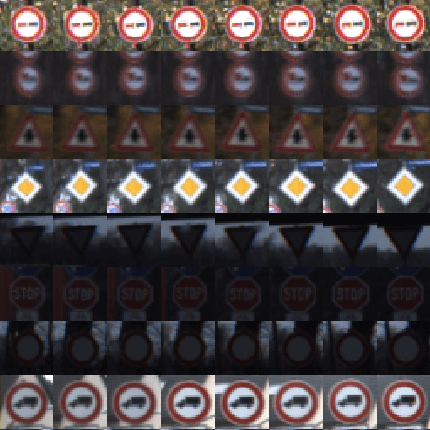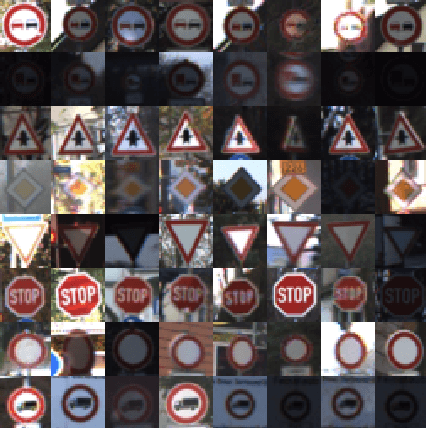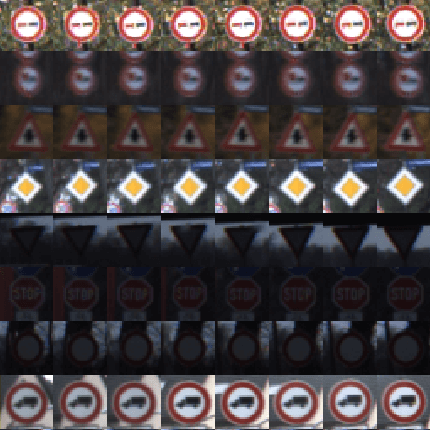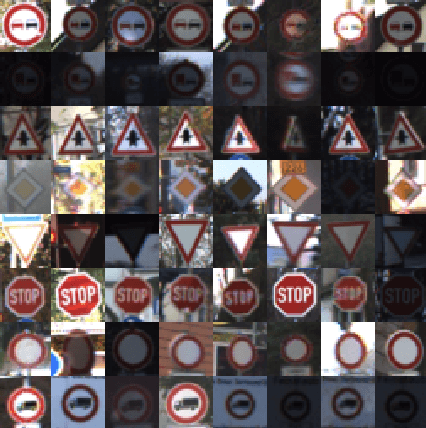The project aimed to introduce TensorFlow and Deep Learning to those new to it. Given a dataset of German traffic signs, we had to train a classifier them with at least 93% accuracy.
At this point I want to immediately mention the writeup for this project. If you wish to find out what I’ve done in more depth, feel free to have a look.
Data
We were given a set of 50000 images, depicting 43 different classes of German traffic signs, with each image of size 32x32.
I have performed initial data analysis by visualising the dataset and making sure it’s varied enough.
Methods
I found that the LeNet architecture shown to us during the lectures and the first one I attempted for this task, provided good results already. The only addition I made was changing the weight initialization metjod to Xavier-Glorot. The architecture was as follows:
| Layer | Description |
|---|---|
| Input | 32x32x3 RGB image |
| Convolution 5x5, k=6 | 1x1 stride, same padding, outputs 28x28x6 |
| RELU | |
| Max pooling | 2x2 stride, outputs 14x14x6 |
| Convolution 5x5, k=16 | 1x1 stride, same padding, outputs 10x10x16 |
| RELU | |
| Max pooling | 2x2 stride, outputs 5x5x6 |
| Fully connected | 120 hidden units |
| RELU | |
| Fully connected | 84 hidden units |
| RELU | |
| Fully connected | 43 hidden units |
| Softmax |
Results
On my first run of the network, I have managed to achieve the desired accuracy and happily decided to dedicate the time saved to the next project. 😊
Code Repository: GitHub
Main Notebook: Jupyter
Writeup: writeup.md





